new posts in all blogs
Viewing: Blog Posts Tagged with: 2017 Newbery contenders, Most Recent at Top [Help]
Results 1 - 6 of 6
How to use this Page
You are viewing the most recent posts tagged with the words: 2017 Newbery contenders in the JacketFlap blog reader. What is a tag? Think of a tag as a keyword or category label. Tags can both help you find posts on JacketFlap.com as well as provide an easy way for you to "remember" and classify posts for later recall. Try adding a tag yourself by clicking "Add a tag" below a post's header. Scroll down through the list of Recent Posts in the left column and click on a post title that sounds interesting. You can view all posts from a specific blog by clicking the Blog name in the right column, or you can click a 'More Posts from this Blog' link in any individual post.

By:
Betsy Bird,
on 9/26/2016
Blog:
A Fuse #8 Production
(
Login to Add to MyJacketFlap)
JacketFlap tags:
Reviews,
Best Books,
Candlewick,
middle grade historical fiction,
Anne Nesbet,
Best Books of 2016,
2016 reviews,
Reviews 2016,
2016 middle grade fiction,
2017 Newbery contenders,
2016 middle grade historical fiction,
Add a tag
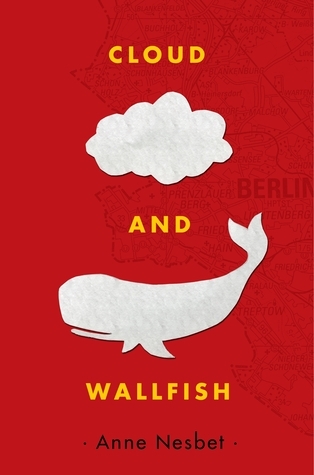 Cloud and Wallfish
Cloud and Wallfish
By Anne Nesbet
Candlewick Press
$16.99
ISBN: 978-0-7636-8803-5
Ages 9-12
On shelves now
Historical fiction is boring. Right? That’s the common wisdom on the matter, certainly. Take two characters (interesting), give them a problem (interesting), and set them in the past (BOOOOOORING!). And to be fair, there are a LOT of dull-as-dishwater works of historical fiction out there. Books where a kid has to wade through knee-deep descriptions, dates, facts, and superfluous details. But there is pushback against this kind of thinking. Laurie Halse Anderson, for example, likes to call her books (Chains, Forge, Ashes, etc.) “historical thrillers”. People are setting their books in unique historical time periods. And finally (and perhaps most importantly) we’re seeing a lot more works of historical fiction that are truly fun to read. Books like The War That Saved My Life by Kimberly Brubaker Bradley, or One Crazy Summer by Rita Williams-Garcia, or My Near-Death Adventures by Alison DeCamp, or ALL of Louise Erdrich’s titles for kids. Better add Cloud and Wallfish by Anne Nesbet to that list as well. Doing what I can only characterize as the impossible, Nesbet somehow manages to bring East Germany in 1989 to full-blown, fascinating life. Maybe you wouldn’t want to live there, but it’s certainly worth a trip.
His name is Noah. Was Noah. It’s like this, one minute you’re just living your life, normal as you please, and the next your parents have informed you that your name is a lie, your birth date is wrong, and you’re moving to East Berlin. The year is 1989 and as Noah (now Jonah)’s father would say, there’s a definite smell of history in the air. His mother has moved the family to this new city as part of her research into education and stuttering (an impediment that Noah shares) for six months. But finding himself unable to attend school in a world so unlike the one he just left, the boy is lonely. That’s why he’s so grateful when the girl below his apartment, Claudia, befriends him. But there are secrets surrounding these new friends. How did Claudia’s parents recently die? Why are Noah’s parents being so mysterious? And what is going on in Germany? With an Iron Curtain shuddering on its foundations, Noah’s not just going to smell that history in the air. He’s going to live it, and he’s going to get a friend out of the bargain as well.
It was a bit of a risk on Nesbet’s part to begin the book by introducing us to Noah’s parents right off the bat as weirdly suspicious people. It may take Noah half a book to create a mental file on his mom, but those of us not related to the woman are starting our own much sooner. Say, from the minute we meet her. It was very interesting to watch his parents upend their son’s world and then win back his trust by dint of their location as well as their charm and evident love. It almost reads like a dare from one author to another. “I bet you can’t make a reader deeply distrust a character’s parents right from the start, then make you trust them again, then leave them sort of lost in a moral sea of gray, but still likable!” Challenge accepted!
Spoiler Alert on This Paragraph (feel free to skip it if you like surprises): Noah’s mom is probably the most interesting parent you’ll encounter in a children’s book in a long time. By the time the book is over you know several things. 1. She definitely loves Noah. 2. She’s also using his disability to further her undercover activities, just as he fears. 3. She incredibly frightening. The kind of person you wouldn’t want to cross. She and her husband are utterly charming but you get the distinct feeling that Noah’s preternatural ability to put the puzzle pieces of his life together is as much nature as it is nurture. Coming to the end of the book you see that Noah has sent Claudia postcards over the years from places all over the world. Never Virginia. One could read that a lot of different ways but I read it as his mother dragging him along with her from country to country. There may never be a “home” for Noah now. But she loves him, right? I foresee a lot of really interesting bookclub discussions about the ending of this book, to say nothing about how we should view his parents.
As I mentioned before, historical fiction that’s actually interesting can be difficult to create. And since 1989 is clear-cut historical fiction (this is the second time a character from the past shared my birth year in a children’s book . . . *shudder*) Nesbet utilizes several expository techniques to keep young readers (and, let’s face it, a lot of adult readers) updated on what precisely is going on. From page ten onward a series of “Secret Files” boxes will pop up within the text to give readers the low-down. These are written in a catchy, engaging style directly to the reader, suggesting that they are from the point of view of an omniscient narrator who knows the past, the future, and the innermost thoughts of the characters. So in addition to the story, which wraps you in lies and half-truths right from the start to get you interested, you have these little boxes of explanation, giving you information the characters often do not have. Some of these Secret Files are more interesting than others, but as with the Moby Dick portions in Louis Sachar’s The Cardturner, readers can choose to skip them if they so desire. They should be wary, though. A lot of pertinent information is sequestered in these little boxes. I wouldn’t cut out one of them for all the wide wide world.
Another way Nesbet keeps everything interesting is with her attention to detail. The author that knows the minutia of their fictional world is an author who can convince readers that it exists. Nesbet does this by including lots of tiny details few Americans have ever known. The pirated version of The Wonderful Wizard of Oz that was disseminated for years throughout the German Democratic Republic? I had no idea. The listing of television programs available there? Very funny (did I mention the book is funny too?). Even the food you could get in the grocery store and the smell of the coal-choked air feels authentic.
Of course, you can load your book down with cute boxes and details all day and still lose a reader if they don’t relate to the characters. Noah could easily be reduced to one of those blank slate narrators who go through a book without a clear cut personality. I’m happy to report that this isn’t the case here. And I appreciated the Claudia was never a straight victim or one of those characters that appears impervious to the pain in her life. Similarly, Noah is a stutterer but the book never throws the two-dimensional bully in his path. His challenges are all very strange and unique to his location. I was also impressed by how Nesbet dealt with Claudia’s German (she makes up words or comes up with some Noah has never heard of and so Nesbet has the unenviable job of making that clear on the page). By the same token, Noah has a severe stutter, but having read the whole book I’m pretty sure Nesbet only spells the stutter out on the page once. For every other time we’re told about it after the fact or as it is happening.
I’ve said all this without, somehow, mentioning how lovely Nesbet’s writing is. The degree to which she’s willing to go deep into her material, plucking out the elements that will resonate the most with her young readers, is masterful. Consider a section that explains what it feels like to play the role of yourself in your own life. “This is true even for people who aren’t crossing borders or dealing with police. Many people in middle school, for instance, are pretending to be who they actually are. A lot of bad acting is involved.” Descriptions are delicious as well. When Claudia comes over for dinner after hearing about the death of her parents Nesbet writes, “Underneath the bristles, Noah could tell, lurked a squishy heap of misery.”
There’s little room for nuance in Nesbet’s Berlin, that’s for sure. The East Berliners we meet are either frightened, in charge, or actively rebelling. In her Author’s Note, Nesbet writes about her time in the German Democratic Republic in early 1989, noting where a lot of the details of the book came from. She also mentions the wonderful friends she had there at that time. Noah, by the very plot in which he finds himself, would not be able to meet these wonderful people. As such, he has a black-and-white view of life in East Berlin. And it’s interesting to note that when his classmates talk up the wonders of their society, he never wonders if anything they tell him is true. Is everyone employed? At what price? There is good and bad and if there is nuance it is mostly found in the characters like Noah’s mother. Nesbet herself leaves readers with some very wise words in her Author’s Note when she says to child readers, “Truth and fiction are tangled together in everything human beings do and in every story they tell. Whenever a book claims to be telling the truth, it is wise (as Noah’s mother says at one point) to keep asking questions.” I would have liked a little more gray in the story, but I can hardly think of a better lesson to impart to children in our current day and age.
In many way, the book this reminded me of the most was Katherine Paterson’s Bridge to Terabithia. Think about it. A boy desperate for a friend meets an out-of-the-box kind of girl. They invent a fantasyland together that’s across a distinct border (in this book Claudia imagines it’s just beyond the Wall). Paterson’s book was a meditation on friendship, just like Nesbet’s. Yet there is so much more going on here. There are serious thoughts about surveillance (something kids have to think about a lot more today), fear, revolution, loyalty, and more than all this, what you have to do to keep yourself sane in a world where things are going mad. Alice Through the Looking Glass is referenced repeatedly, and not by accident. Noah has found himself in a world where the rules he grew up with have changed. As a result he must cling to what he knows to be true. Fortunately, he has a smart author to help him along the way. Anne Nesbet always calls Noah by his own name, even when her characters don’t. He is always Noah to us and to himself. That he finds himself in one of the most interesting and readable historical novels written for kids is no small thing. Nesbet outdoes herself. Kids are the beneficiaries.
On shelves now.
Source: Galley sent from publisher for review.
Like This? Then Try:
Professional Reviews:

Mmmm. It’s that time again. The summer is beginning to cool its jets and with fall on the horizon I need to present the third in my yearly four-part prediction series. What was that fantastic quote Travis Jonker came up with the other day? Ah, yes.
“Those who have knowledge, don’t predict. Those who predict, don’t have knowledge.” – Lao Tzu
And like Travis, we’re just going to run roughshod over that one. As ever, I will remind you that my ability to predict these things is a bit on the shoddy side. You might be better off reading the Mock Newbery and Mock Caldecott lists of Goodreads. That said, I can give you something those lists can’t: Scintillating commentary!! Unless you’re reading Heavy Medal or Calling Caldecott (both of which have just started up again). Then you’ll get commentary from a variety of different voices. Anyway . . .
Let’s do this thing.
2017 Caldecott Predictions
Ideas Are All Around by Philip Stead
 I think I’m going to stick with this one. Here’s what usually happens when I mention this book on a prediction list. I say I don’t find it very kid-friendly and then someone responds that they know several kids who love it. They just happen to be older kids. One forgets that not all picture books are aimed at three-year-olds. Stead’s book pushes the boundaries. It may, in fact, be one of those very rare picture books written for a middle grade audience. With that in mind, a consideration of the text and image together takes on a different light entirely.
I think I’m going to stick with this one. Here’s what usually happens when I mention this book on a prediction list. I say I don’t find it very kid-friendly and then someone responds that they know several kids who love it. They just happen to be older kids. One forgets that not all picture books are aimed at three-year-olds. Stead’s book pushes the boundaries. It may, in fact, be one of those very rare picture books written for a middle grade audience. With that in mind, a consideration of the text and image together takes on a different light entirely.
Jazz Day: The Making of a Famous Photograph by Roxane Orgill, ill. Francis Vallejo

Not fish, nor fowl. Is it nonfiction, narrative nonfiction, poetry, or a picture book? The Boston Globe-Horn Book Awards placed it squarely in the picture book category (those judges must have been awfully smart, don’t you think, huh huh, don’t you think, huh?) though like Ideas Are All Around it’s for older readers. A bit of a trend here, eh? Maybe. After all, the last few nonfiction Caldecott winners (Finding Winnie, Locomotive, etc.) were on the older side as well.
Miracle Man by John Hendrix
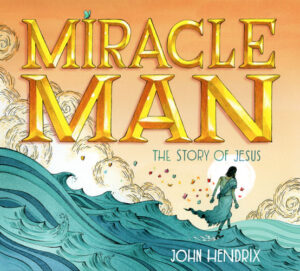
Chant it with me! Jesus, Jesus, Jesus, Jesus! Now last time I did a prediction edition I mentioned the whole question about whether or not a Jesus book could win a Caldecott anymore (since, y’know, the first 1938 winner was Animals of the Bible). Now I’ve found out that I’ll get to talk with The Horn Book Podcast soon about religion and children’s literature in the 21st century. That should help me straighten out my thoughts on the matter. In the meantime, I’m keeping this one in the mix. As I mentioned before, it’s the wildest of my Wild Cards, but I think it may have an outside chance.
Radiant Child: The Story of Young Artist Jean-Michel Basquiat by Javaka Steptoe
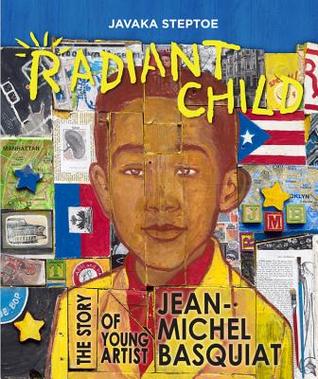
Speaking of the Horn Book Podcast, there was an interesting discussion the other day with Jules Danielson of the 7-Imp blog about whether or not publishers should include information about how the art was made on the publication page of a picture book. Roger Sutton was asking if knowledge of how a book is made adjusts your interpretation of the art. I mentioned this to a friend and they pointed out that in 2016 we’re seeing a crazy amount of eclectic and interesting art in our contenders. From the found wood of Yuyi Morales’s Rudas: Niño’s Horrendous Hermanitas to the Moroccan influence and mixed media of Evan Turk’s The Storyteller (we’ll get to that) to the found wood (again) of this book, it has never been a better time to get creative with your medium. And anyway, this book just blew me away. Technically a bio won the Caldecott last year, but there’s no rule saying it can’t happen repeatedly. And how awesome would it be for a Steptoe to win the Caldecott again? Javaka completely deserves it with this book.
Snow White: A Graphic Novel by Matt Phelan

Okay! So graphic novels have been winning Newberys left, right, and center lately, right? Which is to say, Newbery Honors. On the Caldecott side, This One Summer, illustrated by Jillian Tamaki, written by Mariko Tamaki essentially blew our minds when it won a Caldecott Honor two years ago (and it was YA!). This 1930s reinterpretation of the Snow White story is far younger than Tamaki’s book, and done in an elegant black and white style. It is, in its own way, very sexy but still child appropriate (I’ll have to review it sometime to figure out how that’s even possible). Phelan’s never won any Caldecotts that I can tell, but he’s also become more and more accomplished as the years have gone by. This book would be a risk for the committee, but it would also be a wonderful way of praising Phelan’s evident expertise.
The Storyteller by Evan Turk
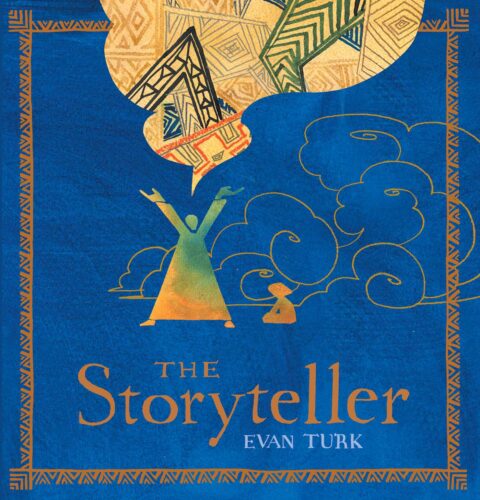
Sometimes a Caldecott winner says something about the times in which we live. Turk’s book talks about the roles stories have in our lives. It folds a story within a story within a story and then backs out again without tripping up once. Visually it’s a stunner, with smart writing to match, but more importantly it’s speaking to the times in which we live. We are desperate for stories these days. This book speaks not just to that need but the solution. Aw, heck. It may even have a chance at a Newbery. Look at the art when you get a chance, though. It’s truly beautiful.
Thunder Boy Jr. by Sherman Alexie, ill. Yuyi Morales
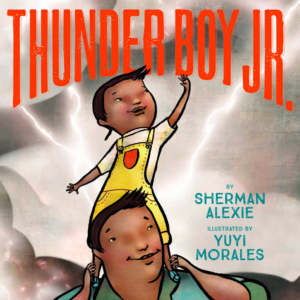
This book was already mentioned on Heavy Medal’s Ten Picture Books That Can Win the 2017 Newbery Medal. On the Caldecott side of the equation it’s already received a Boston Globe-Horn Book Honor. It’s one of those books where the art slowly grabs you. There are circles within circles, connections upon connections. A long discussion of the book yields treasures. You will see things you missed many times before.
They All Saw a Cat by Brendan Wenzel
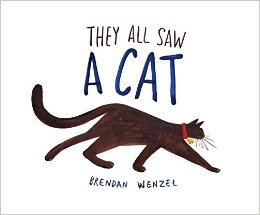
Someone told me recently that this book is scientifically accurate. If you’re unfamiliar with it, the premise is that a single cat is viewed in a multitude of different ways by different animals. I haven’t looked into the veracity of this claim yet, but if true then it’s just another feather in the cap of a remarkable title. Word on the street says that Chronicle paid a pretty penny for the manuscript. From everything I can see, it was worth it in the end.
2017 Newbery Predictions
Cloud and Wallfish by Anne Nesbet

You know, you guys should really listen to that Horn Book Podcast sometime. It was Roger Sutton who mentioned this book and piqued my interest in it. I already had a copy at home since it came with rather peculiar swag. With the book came two little cut out stencils. One of a cloud. One of a whale. Aside from pitying the poor intern that spent at least a day cutting these out, it did interest me. Good cover. Good title. And Nesbet? That was the author behind that Cabinet of Earths series, right? Well I’ve been reading it and on some level it reminded me of The War That Saved My Life. Not the setting so much as just the pure enjoyment I’ve received while reading it. Roger said something similar himself. Nesbet has taken 1989 East Germany and just riddled it with interesting details and great writing. Y’all have to check this out.
Freedom Over Me: Eleven Slaves, Their Lives and Dreams Brought to Life by Ashley Bryan
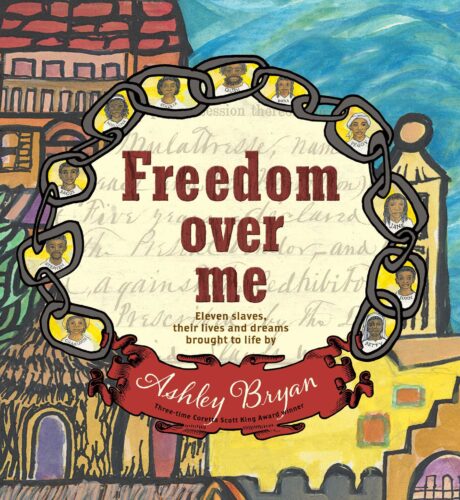
It’s been (checks calendar) six days since this book was released. Have you read it yet? Have you, have you? Because I’d really like to talk to somebody about it. I think 2016 is going to be The Year of Difficult Writing for me. So many authors are taking risks, doing things no one’s done before, and creating art in the process. Mr. Bryan is no exception. I’ve never seen anything quite like what he’s done here. Naming this book as even an honor would be a powerful statement.
The Inquisitor’s Tale: Or, the Three Magical Children and Their Holy Dog by Adam Gidwitz
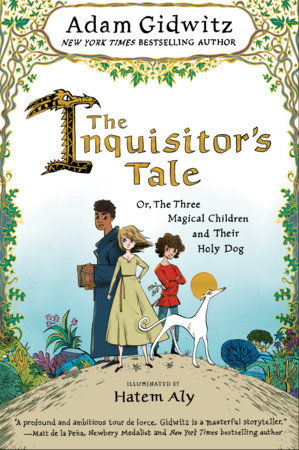
I actually did a double take when I reread my Summer Prediction Edition and found, to my shock and horror, that I had not included this book on the list. I must have read it right after I posted. In fact, I know I did since three or four readers named it as a top pick. Whole lotta religion in this one. And blood and guts too (this is Mr. Gidwitz we’re talking about) but talk about risks! He’s basically taking Christianity and Judaism and discussing them in a context almost never seen in middle grade historical fiction (fantasy? fiction?). Gutsy. Blood and gutsy.
Pax by Sara Pennypacker
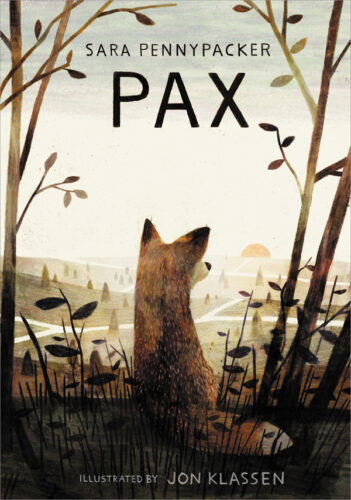
Ah, Pax. Let out of the gate early in 2016 with a huge marketing push to match. It worked in terms of sales, of course. This book has already become a New York Times bestseller (no mean feat for a book that isn’t part of a series written by a man whose name rhymes with My Own Pen). It was the earliest book to garner Newbery buzz as well. Indeed, there’s a reason Heavy Medal chose it as one of the first books of the year to discuss. Love it or hate it, there is a LOT to chew on in this novel. It could either sweep the awards or not even get an Honor nod. Though, if I were a betting woman, I’d say it’s a clear cut Newbery Honor book.
Presenting Buffalo Bill: The Man Who Invented the Wild West by Candace Fleming
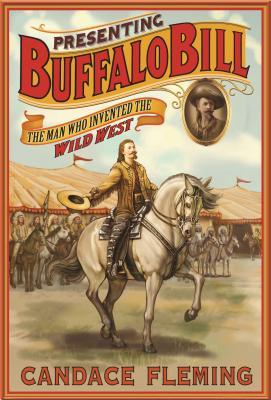
The Newbery is not awarded for difficulty. If it were, Fleming would be a shoo-in. Instead, she’s written a middle grade nonfiction biography of a figure forgotten by most kids today. A biography hasn’t won a Newbery since 1988 (Lincoln, a Photobiography, in case you’re curious). So the chances of Fleming winning for this book are slim, but I’m a fan of the underdog. The writing is extraordinary, the topic impossible, and the take clever. We’ll see if the committee agrees.
Raymie Nightingale by Kate DiCamillo

Like Pax, this is one of those shoo-ins for discussion. Also like Pax it came out early in the year. Will the committee be burned out by the time they actually get around to discussing it? Considering how much there is to discuss about the book, not likely. If it wins the Award proper that will be DiCamillo’s third Newbery Award (not counting Honors). Something to chew on.
When Green Becomes Tomatoes by Julie Fogliano

Mmm. Poetry. Slightly less rare than middle grade biography winners. After all, verse novels have won. Monologues done in rhyme have won. Even straight up books of poetry have, technically, won. One thing I have learned about this book is that not everybody shares my love of it. Like humor, the worth of poetry can prove subjective. Still and all, there’s a groundswell of support for it out there. One of the loveliest books of the year, by far.
Wolf Hollow by Lauren Wolk
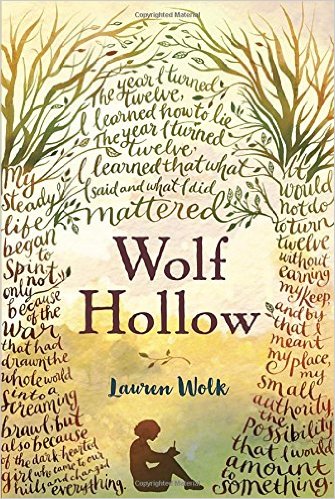
Also known as the book I had to flip to the back of because it became too tense for me not to know how it ended. They keep comparing it to To Kill a Mockingbird in the ad copy, which I feel is a bit unfair. Any book compared to Harper Lee’s classic is going to end up with a raw deal. It’s an interesting take on prejudices and has, by far, the most evil bully in a book I have EVER read. I wouldn’t call it enjoyable in the same way as the Nesbet book, but it was deeply compelling and beautifully written.
AND NOW . . . THE BOOK THAT IS GOING TO BE SUPER FUN FOR THE NEWBERY COMMITTEE AS THEY TRY TO FIGURE OUT IF IT’S EVEN UP FOR CONTENTION OR NOT . . .
Are You an Echo? The Lost Poetry of Misuzu Kaneko, narrative and translation by David Jacobson, Sally Ito & Michiko Tsuboi

Haven’t heard of it? I bet not. I have not yet begun to sing its praises on this blog, having just read it, but this is without a doubt one of the most amazing books of the year.
Now this should be an open and shut case of a book that simply can’t be a Newbery contender. See how I mentioned that there was a translator or two involved in this book? Right. Books eligible for the Newbery must have originally been published in the United States. Case closed, right? Maybe not. This book is about the life of a celebrated Japanese poet for children who was rediscovered not long ago, and became famous thanks in large part to one of her poems circulating after the tsunami of 2011. It pulls no punches and reproduces original translations of her poems throughout the text.
So the book itself was originally published in the States, right? But the poetry spotted throughout the book comes from a Japanese anthology of Kaneko’s works. What this means is that even if the poetry has never been translated in this way before, technically the poems have been translated overseas before and therefore the book is not a Newbery contender. I think. If true this is a pity since I truly believe that anyone who reads this book will be utterly blown away by what they find inside. In any case, the author of the poetry is dead and I believe that may be an impediment to its Newbery qualifications as well. Ah well. Check it out when you get a chance. It’s really quite remarkable.
Okay, folks! Lemme have it! What did I miss?

Fickle little me. Titles appear. Titles disappear. Many of the books I placed on my Spring 2017 predictions list are gone by June, and what has changed? Aren’t the books as wonderful now as they were when I originally propped them up? Of course they are, but I’ve done enough book discussions in the intervening months that I feel as if I’ve a better grasp on what’s a contender. Not that my track record is by any means perfect. These are, as ever, just my professional opinion. And I may have gone a little crazy with the Caldecott predictions this time around . . .
Be sure to check out the 100 Scope Notes post on books that Goodreads readers think have a real shot too.
2017 Caldecott Predictions
Thunder Boy Jr. by Sherman Alexie, ill. Yuyi Morales
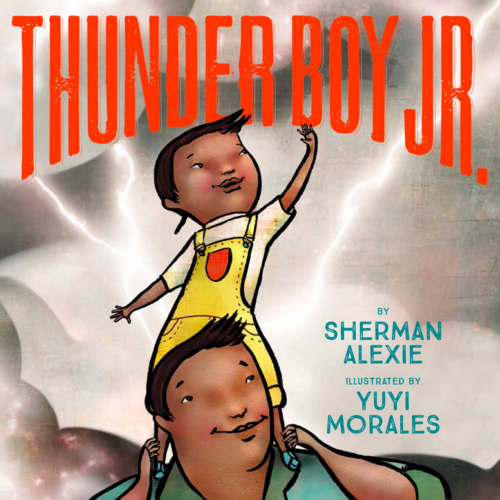
I read this one a long time ago and liked it just fine. Personally, it wasn’t hitting me in the same way as Yuyi’s previous two books had, but I certainly enjoyed the spirit and energy and sheer love coming off the pages. Then I talked about it with a bunch of other librarians and when we sat down and looked at those images, one after another, and discussed how one leads to another and how well Yuyi is able to convey familial affection with just the simplest of movements . . . well, I’m sold. In fact, I may have just been convinced that this is her best book yet.
Du Iz Tak? by Carson Ellis
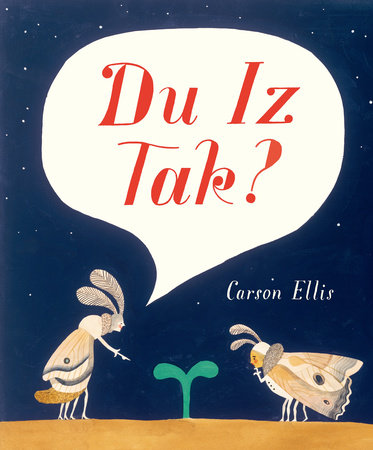
Unlike many of my honored colleagues, I’m pretty darn neutral on Ellis. As a person she’s sweet as peaches on the vine but her art has never left me feeling warm and snuggly. Now those of you who know me know that I’ve a weakness for weirdness. Dark horse medal contenders are my favorites. All the more reason that I should incline towards this strange, silly, downright odd little tale of bugs speaking their own (very comprehensible) language and the flower that inspires them. I’ve read this book many times to my own kids and I can honestly say that it’s a perfect combination of luscious, lovely, occasionally terrifying art and kid-friendly storylines.
This House Once by Deborah Freedman
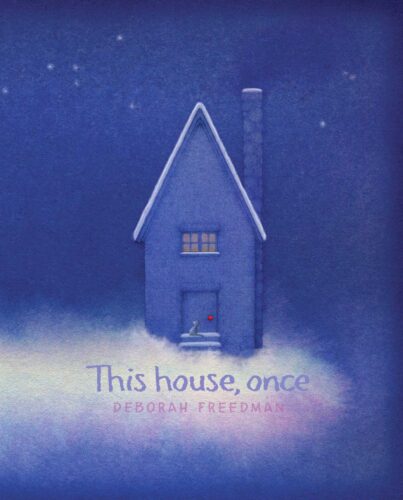
Dude, I was into Freedman when Scribble came out. When I saw that book I remember thinking to myself, “This lady’s got something to her. By gum, she’s going places!” And yes. I do actually use phrases like “by gum” in my head. I’ve also been known to substitute it for “golly”, “gee willikers”, and “well slap my face and call me Bertha.” But I digress. I’m still parsing my thoughts on this book, which is both like every Freedman book you’ve ever seen and is vastly different from them all. Worth thinking about.
Miracle Man by John Hendrix
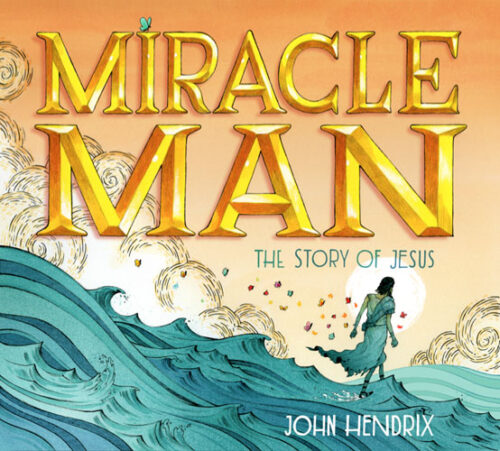
I mean, I put it to you. Can a Jesus book win a Caldecott in the 21st century? Considering that the 1938 Medal Winner, which is to say the very first Caldecott ever given out, went to Animals of the Bible, A Picture Book, I’d say there was a precedent. This is another wild card, and I don’t envy the Caldecott committee this discussion. It’s hard to not to be in awe of Hendrix’s typography alone.
Before Morning by Joyce Sidman, ill. Beth Krommes

Do you do that thing I do where if a person has won a Newbery or Caldecott Medal (not Honor) before then you sort of give them second billing when thinking about future award winners? I do that all the time, but when you see a book as gorgeous as this one you put all that aside. In this hot June month, something as lovely, cool, and refreshing as this snowbound wonder book is of infinite relief. Krommes outdoes herself here, and the emotional beats of the book thump strong. Is that a phrase? I’m keeping it in.
The Uncorker of Ocean Bottles by Michelle Cuevas, ill. Erin E. Stead

Mmm. Deceptively simple, this one. Like Krommes, Stead already has a nice and shiny Caldecott Medal under her belt. I had the pleasure of hearing Cuevas and Stead discussing this book during Day of Dialog at Book Expo this year. Here’s a fun game: Read the text without looking at the pictures. You might get an entirely different view of the proceedings. Stead’s mark is so strong and her images so beautiful that it may contribute heavily to the book’s potential win. We shall see.
Ideas Are All Around by Philip Stead
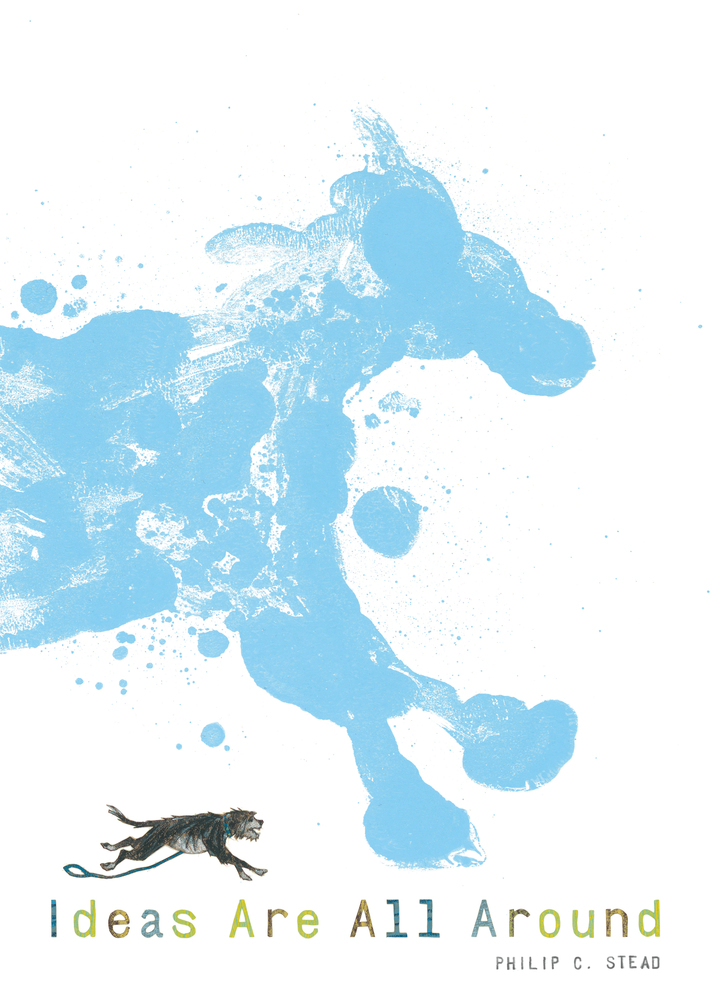
Mind you, he has another book out this year (Samson in the Snow) and it wouldn’t surprise me even a hundredth of a jot if he won the Caldecott for that instead. This is Mr. Stead’s hoity-er toity-er offering. Beautiful, no question. But a touch on the esoteric side.
Radiant Child: The Story of Young Artist Jean-Michel Basquiat by Javaka Steptoe

I have been waiting for this book for approximately five years. Little, Brown & Co. is sick to death of me asking, “This year? How ’bout this year? Is it coming out this year?” To see the art in person floors you. Steptoe painted entirely on found wood and the storytelling of Basquiat himself is sublime. This is one of my top picks, no question at all. You are in for such a treat when you read it!!!
The Storyteller by Evan Turk

GAH!! So good! So very very very very good. I’m not going to railroad you with reasons. Just read my review if you’re curious.
Jazz Day: The Making of a Famous Photograph by Roxane Orgill, ill. Francis Vallejo
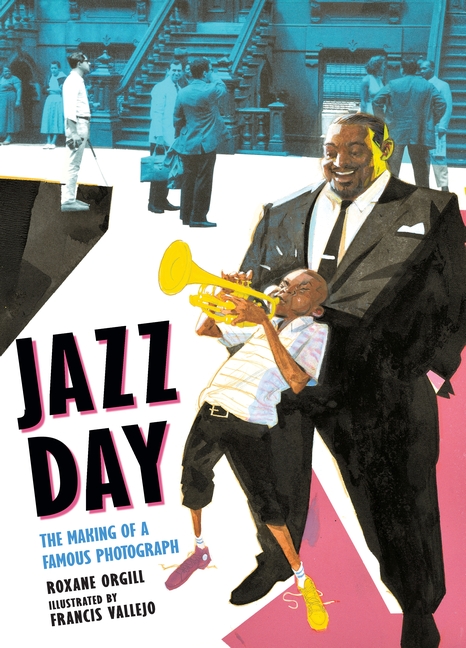
Winner of the Boston Globe-Horn Book Award for Picture Books, as awarded by a clearly BRILLIANT committee *cough cough*. Vallejo is a first timer here, but you’d never know it from the art. As I’ve mentioned before, the book doesn’t slot into any categories very easily. Hopefully the committee will recognize the art for what it is – extraordinary and distinguished.
They All Saw a Cat by Brendan Wenzel

And, the winner. Done. Nothing more to see here, folks.
I’m sorry . . . you’ve not seen this one? Oh. Well, it’s quite simple. Wenzel has created the Caldecott winner for 2017. Don’t know what’s confusing about that. You’ll understand when you see it for yourself. I don’t want to call it self-explanatory. Let’s just say, it’s a bit of a given.
Freedom in Congo Square by Carol Boston Weatherford, ill. R. Gregory Christie
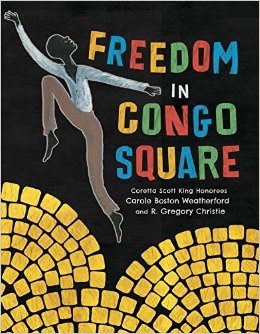
Like Yuyi’s book, it took me a little while to come around to this one. Christie’s art changes subtly from book to book. Here, he appears to be channeling the ghost of Jacob Lawrence. That’s a good thing. An amazing solution to rendering slavery and its horrors accurately but still in a way that’s friendly to kids on the younger end of the education scale. After you read this one, you just gotta dance.
2017 Newbery Predictions
My Newbery reads continue to lag vs. my Caldecott reads (picture books are just easier to read quickly!). Fortunately, I’ve been lucky in what’s crossed my plate. If the jury would be so good as to consider . . .
The Wild Robot by Peter Brown
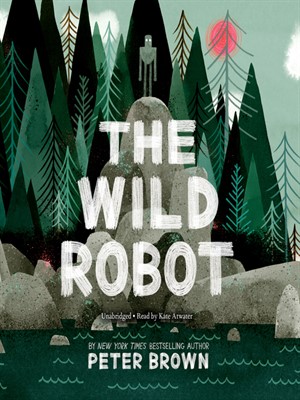
A long shot, no question. Its potential relies entirely on the kinds of readers you’ll find on the Newbery committee this year. This book requires one to stretch their incredulity from time to time. If you can do so, the rewards are vast. Such a good bedtime book. It would be a joy to see this make the list.
Freedom Over Me: Eleven Slaves, Their Lives and Dreams Brought to Life by Ashley Bryan

I call this one Simon & Schuster’s Secret Weapon. But don’t take my word for it. Read this brief plot description for yourself: “Using original slave auction and plantation estate documents, Ashley Bryan offers a moving and powerful picture book that contrasts the monetary value of a slave with the priceless value of life experiences and dreams that a slave owner could never take away.” Only it’s even better than that. Bryan is doing something completely new here and the writing is perfect. Don’t count this one out. I think it has some real legs.
Raymie Nightingale by Kate DiCamillo

It’s good. Deeply sad (a theme in 2016) but an honest-to-goodness page turner. I reviewed it here but I’m still parsing it in my mind. There is a LOT to chew on in these scant little pages.
When Green Becomes Tomatoes by Julie Fogliano

Poor poetry. I’ll be your friend. This is a book where the poems start off sounding pretty rote (this is hardly the first poetry-for-every-season-of-the-year book in the world) but then you get sucked into Fogliano’s writing. I like the art just fine, but the text is the true star of the show. You may read my review here if you’re curious.
Full of Beans by Jennifer L. Holm
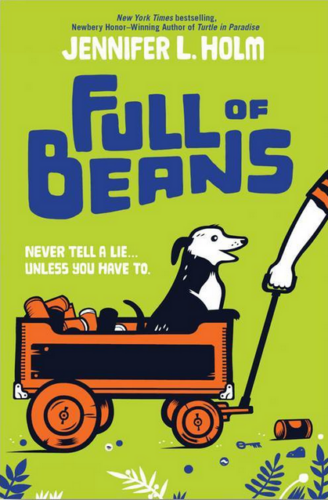
Here’s a fun quiz question for you: Has a prequel to a Newbery Honor ever won a Newbery itself? If this book continues Holm’s winning streak we may get our answer. Mind you, Holm has never won herself a Newbery Award proper. This wouldn’t be a bad book to do so. Just saying.
Pax by Sara Pennypacker
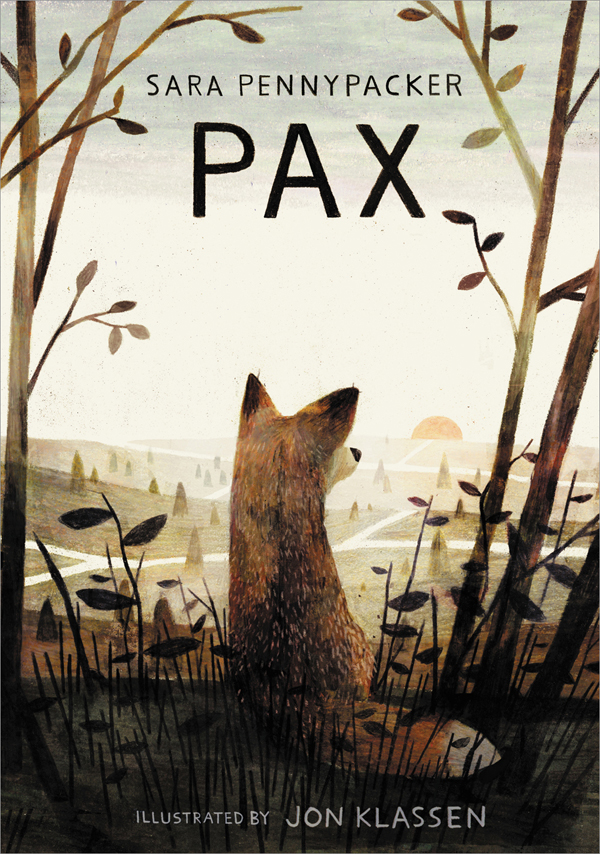
We had our Pax push and even a Pax backlash, so at this point I think we’re ahead of the game. Clearly this book has legs and a LOT of people discussing it. I think it continues to be one of the strongest contenders. A book that could only be tossed out on a technicality.
Samurai Rising: The Epic Life of Minamoto Yoshitsune by Pamela Turner, ill. Gareth Hinds
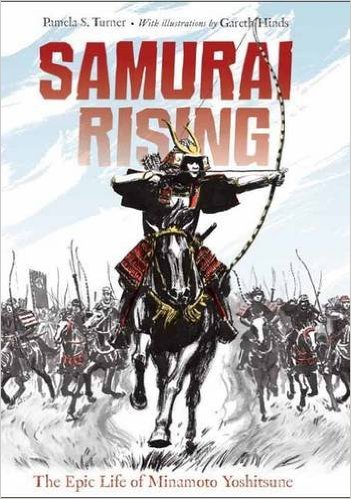
YES! What’s that line from The Princess Bride? “Fencing, fighting, torture, revenge, giants, monsters, chases, escapes, true love, miracles…” Not so many giants and monsters in this and the true love . . . well, you could make a case for it. Otherwise, I think we’re pretty close. Bloody but upbeat, that’s for sure. You can read my review of it here.
Wolf’s Hollow by Lauren Wolk

Originally written as an adult novel, this book was turned into one for kids with very little touches and tweaks. It’s not an easy read, but it’s a very strong one. I could see it going head to head with all the other major contenders. Better go out and read it when you get a chance. My review is here.
And that’s all she copiously wrote! What have I missed? Spill it. I know there’s a gap in there somewhere a mile wide.


By:
Betsy Bird,
on 4/13/2016
Blog:
A Fuse #8 Production
(
Login to Add to MyJacketFlap)
JacketFlap tags:
Reviews,
middle grade fiction,
Best Books,
Candlewick,
Kate DiCamillo,
middle grade historical fiction,
middle grade realistic fiction,
Best Books of 2016,
2016 reviews,
Reviews 2016,
2016 middle grade fiction,
2017 Newbery contenders,
2016 middle grade historical fiction,
Add a tag
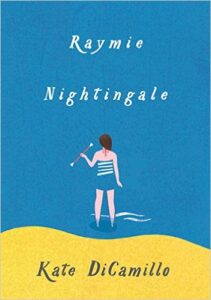 Raymie Nightingale
Raymie Nightingale
By Kate DiCamillo
Candlewick Press
$16.99
ISBN: 978-0-7636-8117-3
Ages 9-12
On shelves now
My relationship to Kate DiCamillo’s books is one built entirely on meaning. Which is to say, the less emotional and meaningful they are, the better I like ‘em. Spaghetti loving horses and girls that live in tree houses? Right up my alley! China rabbits and mice with excessive earlobes? Not my cup of tea. It’s good as a reviewer to know your own shortcomings and I just sort of figured that I’d avoid DiCamillo books when they looked deep and insightful. And when the cover for Raymie Nightingale was released it was easily summarized in one word: Meaningful. A girl, seen from behind, stands ankle-deep in water holding a single baton. Still, I’ve had a good run of luck with DiCamillo as of late and I was willing to push it. I polled my friends who had read the book. The poor souls had to answer the impossible question, “Will I like it?” but they shouldered the burden bravely. Yes, they said. I would like it. I read it. And you know what? I do like it! It is, without a doubt, one of the saddest books I’ve ever read, but I like it a lot. I like the wordplay, the characters, and the setting. I like what the book has to say about friendship and being honest with yourself and others. I like the ending very very much indeed (it has a killer climax that I feel like I should have seen coming, but didn’t). I do think it’s a different kind of DiCamillo book than folks are used to. It’s her style, no bones about it, but coming from a deeper place than her books have in the past. In any case, it’s a keeper. Meaning plus pep.
Maybe it isn’t much of a plan, but don’t tell Raymie that. So far she thinks she has it all figured out. Since her father skipped town with that dental hygienist, things haven’t been right in Raymie’s world. The best thing to do would be to get her father back, so she comes up with what surely must be a sure-fire plan. She’ll just learn how to throw a baton, enter the Little Miss Central Florida Tire competition, win, and when her father sees her picture in the paper he’ll come on home and all will be well. Trouble (or deliverance) comes in the form of Louisiana and Beverly, the two other girls who are taking this class with Ida Nee (the baton-twirling instructor). Unexpectedly, the three girls become friends and set about to solve one another’s problems. Whether it’s retrieving library books from scary nursing home rooms, saving cats, or even lives, these three rancheros have each other’s backs just when they need them most.
DiCamillo has grown as an author over the years. So much so that when she begins Raymie Nightingale she dives right into the story. She’s trusting her child readers to not only stick with what she’s putting down, but to decipher it as well. As a result, some of them are going to experience some confusion right at the tale’s beginning. A strange girl seemingly faints, moaning about betrayal in front of a high-strung baton instructor. Our heroine stands impressed and almost envious. Then we learn about Raymie’s father and the whole enterprise takes a little while to coalesce. It’s a gutsy choice. I suspect that debut authors in general would eschew beginning their books in this way. A pity, since it grabs your attention by an act of simple befuddlement.
Initial befuddlement isn’t enough to keep you going, though. You need a hook to sustain you. And in a book like this, you find that the characters are what stay with you the longest. Raymie in particular. It isn’t just about identification. The kid reading this book is going to impress on Raymie like baby birds impress on sock puppet mamas. She’s like Fone Bone in Jeff Smith’s series. She’s simultaneously a mere outline of a character and a fully fleshed out human being. Still, she’s an avatar for readers. We see things through her rather than with her. And sure, her name is also the title, but names are almost always titles for Kate DiCamillo (exceptions being The Magician’s Elephant, The Tiger Rising, and that Christmas picture book, of course). If you’re anything like me, you’re willing to follow the characters into absurdity and back. When Beverly says of her mother that, “Now she’s just someone who works in the Belknap Tower gift shop selling canned sunshine and rubber alligators” you go with it. You don’t even blink. The setting is almost a character as well. I suspect DiCamillo’s been away from Florida too long. Not in her travels, but in her books. Children’s authors that willingly choose to set their books in the Sunshine State do so for very personal reasons. DiCamillo’s Florida is vastly different from that of Carl Hiaasen’s, for example. It’s a Florida where class exists and is something that permeates everything. Few authors dare to consider lower or lower middle classes, but it’s one of the things I’ve always respected about DiCamillo in general.
Whenever I write a review for a book I play around with the different paragraphs. Should I mention that the book is sad at the beginning of the review or at the end? Where do I put my theory about historical fiction? Should character development be after the plot description paragraph or further in? But when it comes to those written lines I really liked in a book, that kind of stuff shouldn’t have to wait. For example, I adore the lines, “There was something scary about watching an adult sleep. It was as if no one at all were in charge of the world.” DiCamillo excels in the most peculiar of details. One particular favorite was the small paper cups with red riddles on their sides. The Elephantes got them for free because they were misprinted without answers. It’s my secret hope that when DiCamillo does school visits for this book she’ll ask the kids in the audience what the answer to the riddle, “What has three legs, no arms, and reads the paper all day long?” might be. It’s her version of “Why is a raven like a writing desk?”
Now let us discuss a genre: Historical fiction. One question. Why? Not “Why does it exist?” but rather “Why should any novel for kids be historical?” The easy answer is that when you write historical fiction you have built in, legitimate drama. The waters rise during Hurricane Katrina or San Francisco’s on fire. But this idea doesn’t apply to small, quiet novels like Raymie Nightingale. Set in the summer of 1975, there are only the barest of nods to the time period. Sometimes authors do this when the book is semi-autobiographical, as with Jenni Holm’s Sunny Side Up. Since this novel is set in Central Florida and DiCamillo grew up there, there’s a chance that she’s using the setting to draw inspiration for the tale. The third reason authors sometimes set books in the past is that it frees them up from the restrictions of the internet and cell phone (a.k.a. guaranteed plot killers). Yet nothing that happens in Raymie Nightingale requires that cell phones remain a thing of the past. The internet is different. Would that all novels could do away with it. Still, in the end I’m not sure that this book necessarily had to be historical. It’s perfectly fine. A decent time period to exist in. Just not particularly required one way or another.
Obviously the book this feels like at first is Because of Winn-Dixie. Girl from a single parent home finds friendship and (later rather than sooner, in the case of Raymie Nightingale) an incredibly ugly dog. But what surprised me about Raymie was that this really felt more like Winn-Dixie drenched in sadness. Sadness is important to DiCamillo. As an author, she’s best able to draw out her characters and their wants if there’s something lost inside of them that needs to be found. In this case, it’s Raymie’s father, the schmuck who took off with his dental hygienist. Of course all the characters are sad in different ways here. About the time you run across the sinkhole (the saddest of all watery bodies) on page 235 you’re used to it.
Sure, there are parts of the book I could live without. The parts about Raymie’s soul are superfluous. The storyline of Isabelle and the nursing home isn’t really resolved. On the flip side, there are lots of other elements within these pages that strike me as fascinating, like for example why the only men in the book are Raymie’s absent father, an absent swimming coach, a librarian, and a janitor. Now when I was a child I avoided sad children’s books like the plague. You know what won the Newbery in the year that I was born? Bridge to Terabithia. And to this day I eschew them at all costs. But though this book is awash in personal tragedies, it’s not a downer. It’s tightly written and full of droll lines and, yes I admit it. It’s meaningful. But the meaning you cull from this book is going to be different for every single reader. Whip smart and infinitely readable, this is DiCamillo at her best. Time to give it a go, folks.
On shelves now.
Source: Final copy sent from publisher for review.
Song to Listen to With This Book: King of the Road
Alternative Song: I Wanna Hold Your Hand
Like This? Then Try:


By:
Betsy Bird,
on 3/23/2016
Blog:
A Fuse #8 Production
(
Login to Add to MyJacketFlap)
JacketFlap tags:
Reviews,
poetry,
Roaring Brook,
Best Books,
macmillan,
Julie Morstad,
Neal Porter Books,
Julie Fogliano,
Best Books of 2016,
2016 reviews,
Reviews 2016,
2016 poetry,
2017 Newbery contenders,
Add a tag
 When Green Becomes Tomatoes: Poems for All Seasons
When Green Becomes Tomatoes: Poems for All Seasons
By Julie Fogliano
Illustrated by Julie Morstad
A Neal Porter Book / Roaring Brook Press (Macmillan)
$18.99
ISBN: 9781596438521
Ages 6 and up
On shelves now.
I don’t think I can adequately stress to you the degree to which I did not want to review this book. Not because it isn’t a magnificent title. And not because it isn’t pleasing to both eye and ear alike. No, it probably had more to do with the fact that it’s a work of poetry. I make a point of reviewing poetry regularly, though I’d be the first to say that it wasn’t my first language (if you know what I mean). I respect it but can occasionally find it tough going. I was determined to give this book its due, though. And the only way I could make myself physically sit down and review it was to read it cover to cover again. As I did so I was struck over and over, time and again, by just how melodious the language is here. Look, I’ll level with you. Seasonal poetry books are a dime a dozen. But what Fogliano and Morstad have created together is a lot more than just a book of poems for the changes of the year. This book manages to operate on a level that presents the very act of the seasonal cycle as positively philosophical, yet without distancing itself from its readership. It’s tricky territory, but together Fogliano and Morstad get the job done.
“from a snow-covered tree / one bird singing / each tweet poking / a tiny hole / through the edge of winter”. In the very first poem in When Green Becomes Tomatoes (a poem called “march 20”) the child reader is alerted to a change in the air. The snow is still present and the weather still gloomy, but there is hope on the horizon. Yet rather than turn the book into a paean to warmer weather, poet Julie Fogliano takes time to both celebrate and criticize the passing seasons. By the end of spring you look forward to summer and the end of summer leads to the relief of autumn, and so on and such. Accompanying these thoughts are small poems in lowercase and illustrations carrying the weight and expectations these seasons evoke in us. The end result can only be described in a single word: beautiful.
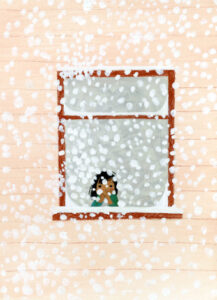 Like I said, I’ve read a lot of poetry books for kids about the seasons in my day. The good ones have some kind of a hook. Like Joyce Sidman tackling it with colors in Red Sings from Treetops or Jon J. Muth writing the poems entirely as haikus as in Hi, Koo! A Year in Seasons. But Fogliano doesn’t really have a hook, and so I approached the title with trepidation. No hook? You mean it was just going to be . . . poems?! It takes the courage of your convictions to do a poetry book for kids straight these days. And it’s not true that Fogliano didn’t have one ace up her sleeve. A lot of works of poetry start in January (when the year itself technically begins). Using a technique of highlighting random dates, this poet begins the book on March 20th, the first day of spring. A small hook, sure, but at least it’s something.
Like I said, I’ve read a lot of poetry books for kids about the seasons in my day. The good ones have some kind of a hook. Like Joyce Sidman tackling it with colors in Red Sings from Treetops or Jon J. Muth writing the poems entirely as haikus as in Hi, Koo! A Year in Seasons. But Fogliano doesn’t really have a hook, and so I approached the title with trepidation. No hook? You mean it was just going to be . . . poems?! It takes the courage of your convictions to do a poetry book for kids straight these days. And it’s not true that Fogliano didn’t have one ace up her sleeve. A lot of works of poetry start in January (when the year itself technically begins). Using a technique of highlighting random dates, this poet begins the book on March 20th, the first day of spring. A small hook, sure, but at least it’s something.
As for the poems themselves, I was impressed not just with the writing, but with Ms. Fogliano’s grasp of what each season actually entails. There are a LOT of cloudy days, rainy days, and generally blah days in this book. They don’t weigh down the narrative or really make it all that gloomy. You just end up experiencing precisely the same feeling you have when you’re living those days. This is the rare book that acknowledges that spring doesn’t immediately mean sunshine and 55-degree temperatures. There’s a lot of snow and some mud and a whole ton of rain. Listen to how she puts it, though: “today / the sky was too busy sulking to rain / and the sun was exhausted from trying / and everyone / it seemed / had decided / to wear their sadness / on the outside / and even the birds / and all their singing / sounded brokenhearted / inside of all that gray.” It really isn’t until June that things even out, and I respect that. All the seasons are like that. It’s great to watch.
As you might have noted, the poetry found in this book straddles a line between being child-friendly and introspective (the two aren’t mutually exclusive, but neither are they always natural pairs). I found myself noting line after line after line that I wanted to quote. Here’s a small taste for each season.
On Spring: “shivering and huddled close / the forever rushing daffodils / wished they had waited.”
On Summer: “if you ever stopped / to taste a blueberry / you would know / that it’s not really about the blue, at all.”
On Fall: “october please / get back in bed / your hands are cold / your nose is red / october please / go back to bed / your sneezing woke december.”
On Winter: “a gust of wind / blew by my nose / i think i will be frozen soon / this living room / (all cozy chairs and fireplace) / has some real explaining to do.”
Some books of children’s poetry lean heavily on the works of other poets. I won’t presume to name her influences but if the July 12th poem is any indication then William Carlos Williams might have had some influence here. And maybe e.e. cummings too (with all that mudlicious mud).
 When she was much younger it’s clear that author Julie Fogliano made some kind of a blood sacrifice to the God of Perfect Illustrator Pairings. How else to explain how she has managed to work alongside such artists as Erin E. Stead and now Julie Morstad? Morstad is no newbie to the field, of course. I’ve been a big fan of her for years, starting with her art for The Swing by Robert Louis Stevenson. Morstad’s great talent lies not necessarily in her waiflike black-eyed children, but rather in how she creates tone. Though there are plenty of sequences in this book of kids playing together or sharing food and soup, for the most part her characters go it alone. These poems are the contemplations of a young person with time and space and nature in spades. I don’t know that if I read Ms. Fogliano’s poetry without the art I would have picked up on that myself. Note too how cyclical the book is. The first poem is the last, sure as shooting, but so too is the person seen at both the beginning and the end. It’s the same kid wearing the same clothes, which makes a subtle implication that though a whole year has gone by, time is simply doubling back on itself. Not sure what to make of that one, frankly.
When she was much younger it’s clear that author Julie Fogliano made some kind of a blood sacrifice to the God of Perfect Illustrator Pairings. How else to explain how she has managed to work alongside such artists as Erin E. Stead and now Julie Morstad? Morstad is no newbie to the field, of course. I’ve been a big fan of her for years, starting with her art for The Swing by Robert Louis Stevenson. Morstad’s great talent lies not necessarily in her waiflike black-eyed children, but rather in how she creates tone. Though there are plenty of sequences in this book of kids playing together or sharing food and soup, for the most part her characters go it alone. These poems are the contemplations of a young person with time and space and nature in spades. I don’t know that if I read Ms. Fogliano’s poetry without the art I would have picked up on that myself. Note too how cyclical the book is. The first poem is the last, sure as shooting, but so too is the person seen at both the beginning and the end. It’s the same kid wearing the same clothes, which makes a subtle implication that though a whole year has gone by, time is simply doubling back on itself. Not sure what to make of that one, frankly.
With poetry, we have to play the game of answering what ages we think the poems are appropriate for. This book poses a bit of a challenge on that front. Some are younger, some definitely older. This mix will allow kids of all ages to take part in the fun, even as the book asks questions like whether or not there is a space between where things begin and things end “or just a slow and gentle fading”. Enticing to the eye but, more importantly almost, alluring to the brain as kids parse what Fogliano is trying to say, this is a book that has the potential (with the right teacher or parent) to convert the formerly unconvertible to the wonders of poetry itself. The truth of the matter is this: Fogliano and Morstad will make poets of us all.
On shelves now.
Source: Galley sent from publisher for review.
Like This? Then Try:
Professional Reviews:
Other Reviews:

What? Who? Now? Yes, if you’re checking the calendar you’ll see that three whole months of 2016 have gone by and you know what that means. Prediction time!
But Betsy, you say, that is quite simply the kookiest thing I’ve ever heard. It’s March, for crying out loud. We’ve ten months until the next award announcement. And all this is true. And it is loopy to the extreme that I’m doing this. Particularly when you consider my track record. To date:
2008 spring predictions: I get one Caldecott right (How I Learned Geography)
2009 spring predictions: I get two Newberys right (The Evolution of Calpurnia Tate and The (Mostly) True Adventures of Homer P Figg)
2010 spring predictions: I get one Newbery right (One Crazy Summer)
2011 spring predictions: I get one Newbery right (Inside Out and Back Again)
2012 spring predictions: I get two Newberys right (The One and Only Ivan and Splendors and Glooms), and one Caldecott right (Green).
2013 spring predictions: I get two Newberys right (Doll Bones and One Came Home) and one Caldecott right (Mr. Wuffles). But pride goeth before the fall.
2014 spring predictions: Zip. Zero. Zilch.
2015 spring predictions: I get two Newberys right (Echo and The War That Saved My Life)
The thing is, if I’d gotten Zip. Zero. Zilch. this time last year I might have given up the fun prediction game altogether. But this isn’t really about accurate predictions, is it? I mean, check out last year’s first listed Caldecott contender. WHOOPSIE! No, it’s about pinpointing the books that everyone should be talking about because they’re such great titles.
Now due to a new job where I’m not commuting to work every day (the hour train ride has turned into a sweet 20 minute walk) combined with my participation on the Boston Globe-Horn Book Award committee for 2016, I am not reading as many middle grade novels as I usually would. I have made up for that by reading every picture book I get sent. So you may see that I’ve a better grasp on Caldecott than Newbery this year. Case in point:
2017 Caldecott Predictions
Maybe Something Beautiful: How Art Transformed a Neighborhood by F. Isabel Campoy & Theresa Howell, ill. Rafael Lopez

See this here in my hand here? This sign that says, “Rafael Lopez for Caldecott”? I’m carrying it because sometimes it feels like every year I tout him as a real Caldecott contender (Drum Dream Girl had in in the bag, man!) and every year he slips through my fingers. Well not this year. This book (based on something he actually went out and did) is beautiful, socially conscious, and a title that kids actually enjoy reading multiple times. I feel it this time! It’s his year!
There Is a Tribe of Kids by Lane Smith
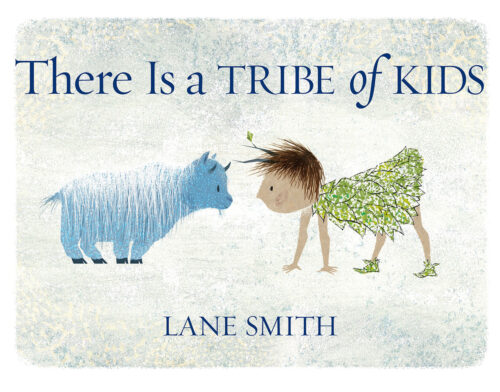
Smith hasn’t won a Caldecott since his Honor for Grandpa Green, but you could argue that this was because he wasn’t really putting his back into it. This book (in 2016 alone there are four different books on collective nouns, did you know?) takes an esoteric idea and weaves it into a story about finding your tribe, both literally and figuratively. This is a softer Smith than we usually see, and it may yield great dividends in the future.
Ideas Are All Around by Philip Stead

If any book could do a little tap dance while singing the words, “Cal-de-cott, Cal-de-cott, nothing could be finer“, it would be this one. It is also THE most esoteric picture book on this list. It will probably receive criticism for seemingly speaking more to adults than children, but the art really is distinguished. If anything this feels like a picture book from another country (I’m reminded of the works of Stian Hole in particular). I’ll be interested in following the conversation surrounding this one in the future.
Cricket Song by Anne Hunter
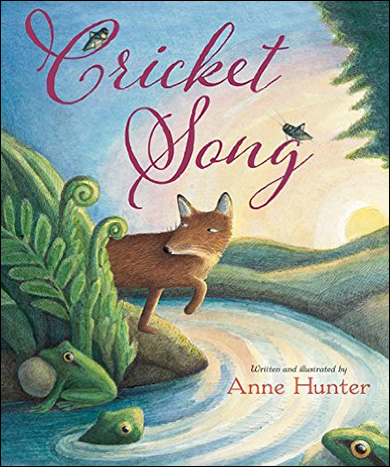
My wild card. There are probably a couple wild cards on this list, but this one is subtle. The author/illustrator splits the visual narrative into two distinct parts while pairing these images with a soothing text. It’s a bedtime book in the classic sense but a clever one. It also has a fox on the cover which, if you haven’t heard it before, is the unofficial animal of children’s books published in 2016.
The Storyteller by Evan Turk

I’ve already talked at great length about this one but I’d be more than happy to talk about it some more! Turk’s still new in this field. He is at the start of his career in children’s books, but the time and the care and the attention and the sheer beauty found in this book is jaw-dropping. Paired with a brilliant text to match, it has a lot to say about what the role of oral storytelling is in the electronic age. Big themes. Brilliant book.
Jazz Day: The Making of a Famous Photograph by Roxane Orgill, ill. Francis Vallejo

And speaking of brilliant books, meet Francis Vellejo. Debut illustrator, and hopefully the man is currently fending off job offers from all the major publishing houses. Vellejo brings to life a text that could have floundered in the hands of a less adept illustrator. Plus, as a woman who majored in college in Art with a concentration in Photography, any Caldecott contender that uses photography in some way has my instant and abiding love. Hopefully the use of photographs published in some other form prior to this book’s publication won’t disqualify it from contention.
One Day in the Eucalyptus Eucalyptus Tree by Daniel Bernstrom, ill. by Brendan Wenzel

Wenzel’s a fellow to watch in 2016. He has several books coming out this year and each one is clever. If I were to bet on just one I might look to this. Naturally if there were any justice then author Daniel Bernstrom would win something for the rhythmic text here. In lieu of that, Wenzel’s art is a fabulous complement to the twist on the Old Lady Who Swallowed a Fly motif. Besides, who doesn’t want to see vomiting snakes?
2017 Newbery Predictions
I shall direct you to the Heavy Medal 2017 Newbery Reading List, since what I have here today is fairly small in comparison. I’m only really going to mention the books that I am certain have a strong fighting chance this early in the game. These would be:
Raymie Nightingale by Kate DiCamillo

So I turn to a friend of mine the other day and I ask her to give it to me straight. “The latest Kate DiCamillo”, I say. “Is it . . . meaningful?” You see, I do very well with DiCamillo books when they involve pummeling carnies with errant baseballs, sweet talking toothless horses, or vacuuming up squirrels (to say nothing of giant donuts). I do far less well when her books make a grab at the old heartstrings. My friend assured me that while the book does not lack for heart, she was certain I would love it. And, since we’re talking DiCamillo here, there’s no one in the world who would argue that it’s not a serious contender in 2017.
Pax by Sara Pennypacker, ill. Jon Klassen

DiCamillo aside, if we had to talk about the book that is managing to get the most Newbery buzz the earliest in the year, Pax is where it’s at. I received a galley of Pax at the same time that I received a galley of The Nest by Kenneth Oppel last year. Both books were illustrated by Klassen and I couldn’t help but think that the man had exquisite taste in manuscripts. Since I had lobbied hard for Pennypacker to get some medal action years ago for her Summer of the Gypsy Moths, I feel this is an honor long since due.
Samurai Rising: The Epic Life of Minamoto Yoshitsune by Pamela Turner, ill. Gareth Hinds

So. Friggin’. Awesome. Weirdly appropriate for the Newbery too, age-wise. In spite of the fact that this is basically the Samurai version of Game of Thrones (something they mention in the ad copy for this book) the blood and guts aren’t visceral. Instead you get an amazing examination of the world’s most famous Samurai warrior. It’s nonfiction and Turner’s backmatter is nothing short of jaw-dropping.
There are some notable books that haven’t been mentioned here, but I want to hear from you. What’s blowing you away this year? What can’t you stop talking about?

 Cloud and Wallfish
Cloud and Wallfish







































Glad to see your take on this one. Reviewed it for Horn Book and it is growing in my estimation the more I think about it. (I have firsthand experience living in West Germany as a child in the late 1950s and mid1960s. Went to East Berlin too.) One thing that I’ve been admiring more and more are the two narrators — there’s the solemn distant third person omniscient one that stays close to Noah/Jonah and then there is the livelier one in the Secret Files. They feel like two different people. I am intrigued by your take on the mother. Do you think child readers are going to see her as you do? I think they are going to be far more interested in Cloud than in her, other than vaguely wondering what she is up to. That is, I think her role is ominous and underlying all, but so subtle that I don’t think kids are going to be focused on it. I actually was wondering more about the father and is so-called mink farmer novel. A rich, rich reading experience indeed. Loving that it is getting attention this way — making me think it is a Newbery contender, something I hadn’t before:)
I think you’re right about my reading more into the mother than a child reader does. One of the things I liked so much about the book is the fact that the parents are simultaneously patronizing and convincing. Like Noah, the reader wants to believe them but, also like Noah, is willing to question what they say. I do hope they pay more attention to Cloud, like you say. The dad is utterly fascinating too. Good point!
I love that the fact boxes have a voice, providing information but adding to the mystery, too.
Roger, did you see my comment? Agree with you completely about those two distinctive narrative voices.
I confess that I never really noticed the two different voices until you guys pointed it out. Makes me want to reread the book all over again.
For what it’s worth, Roger, I only read the book when I did because I heard your mention of it on your podcast.